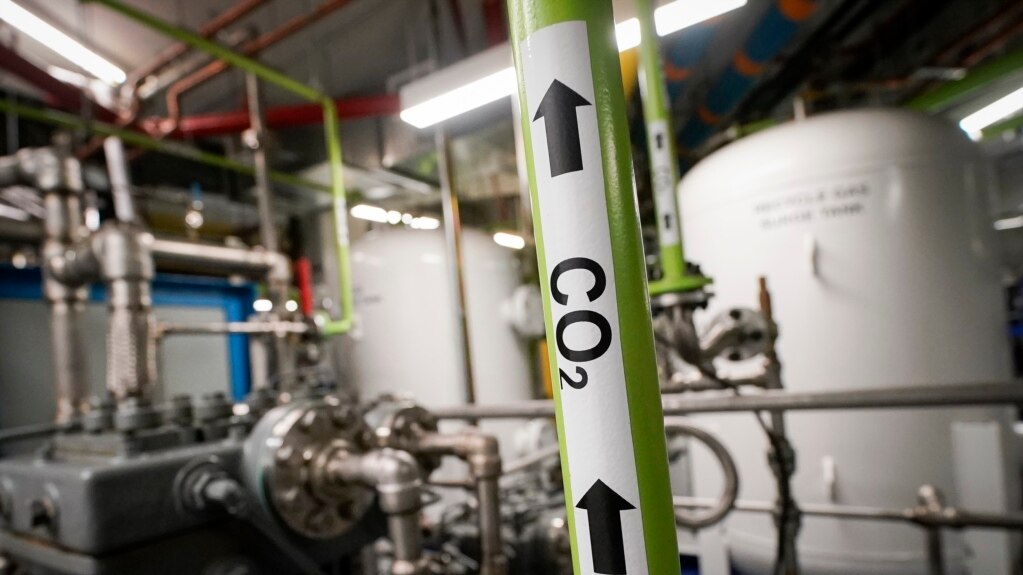In the ground below a tall New York City apartment building, several machines collect carbon dioxide (CO2) from large gas-powered boilers. The boilers help heat the building but also release CO2 into the atmosphere.
The goal of collecting the CO2 is to reduce the amount of the gas entering the atmosphere. Climate scientists say that increased levels of carbon dioxide in the atmosphere is one reason worldwide temperatures have been increasing.
Big buildings in New York City release about two-thirds of the city’s emissions. New York state’s buildings also release more air pollution than any other states.
Under a new state law in New York, many buildings must reduce their emissions. If they do not lower their emissions, the building owners will have to pay a fine.
Some building managers are taking the CO2 and using it to make carbonated drinks, concrete or soap.
“We think the problem is reducing emissions as quickly as possible,” said Brian Asparro. He is chief operating officer of CarbonQuest. The company built the machines to capture the CO2 in the apartment building.
Asparro added, “Time is not on our side, and this type of solution can be installed quickly, cost-effectively and without a major disruption.”
However, critics say that using more renewable sources of energy is a better solution. “Carbon capture doesn’t actually reduce emissions; it seeks to put them somewhere else,” said Anthony Rogers-Wright. He is director of environmental justice at New York Lawyers for the Public Interest.
Critics also worry that it is dangerous to keep large amounts of CO2 below buildings. If too much of the gas is released by accident, it could cause health problems and even death. But supporters of storing the CO2 say it is safe. They also argue that boilers and other gas heating systems are probably more dangerous than the machines that capture the CO2.
The building with CarbonQuest’s machines is about 100 meters tall. The machines reduce the building’s emissions by about 23 percent.
The machines cool the CO2 to about minus-23 degrees Celsius. At that temperature, the gas becomes liquid. Trucks can then carry away the liquid CO2 to Brooklyn, another area in New York City. There, another company compresses the liquid into a solid.
The solid CO2 then reacts with calcium to form calcium carbonate, which goes into concrete. Once the CO2 is in concrete, it will not release into the atmosphere unless the concrete is heated to about 600 degrees Celsius.
To help increase the use of carbon capture machines, the federal government lowers taxes for owners who put them in their buildings.
Nearly 70 percent of New York City’s large buildings have steam boilers that run on natural gas or oil. That number comes from NYC Accelerator. The program helps homeowners and property managers find ways to reduce emissions.
Luke Surowiec is director of building decarbonization at ICF, a consulting group that manages NYC Accelerator.
Many buildings have heating systems that are more than 50 years old, and they often need improvements, Surowiec said. He added that there are possible ways to reduce carbon emissions that have not yet been tried.
I'm Andrew Smith.

